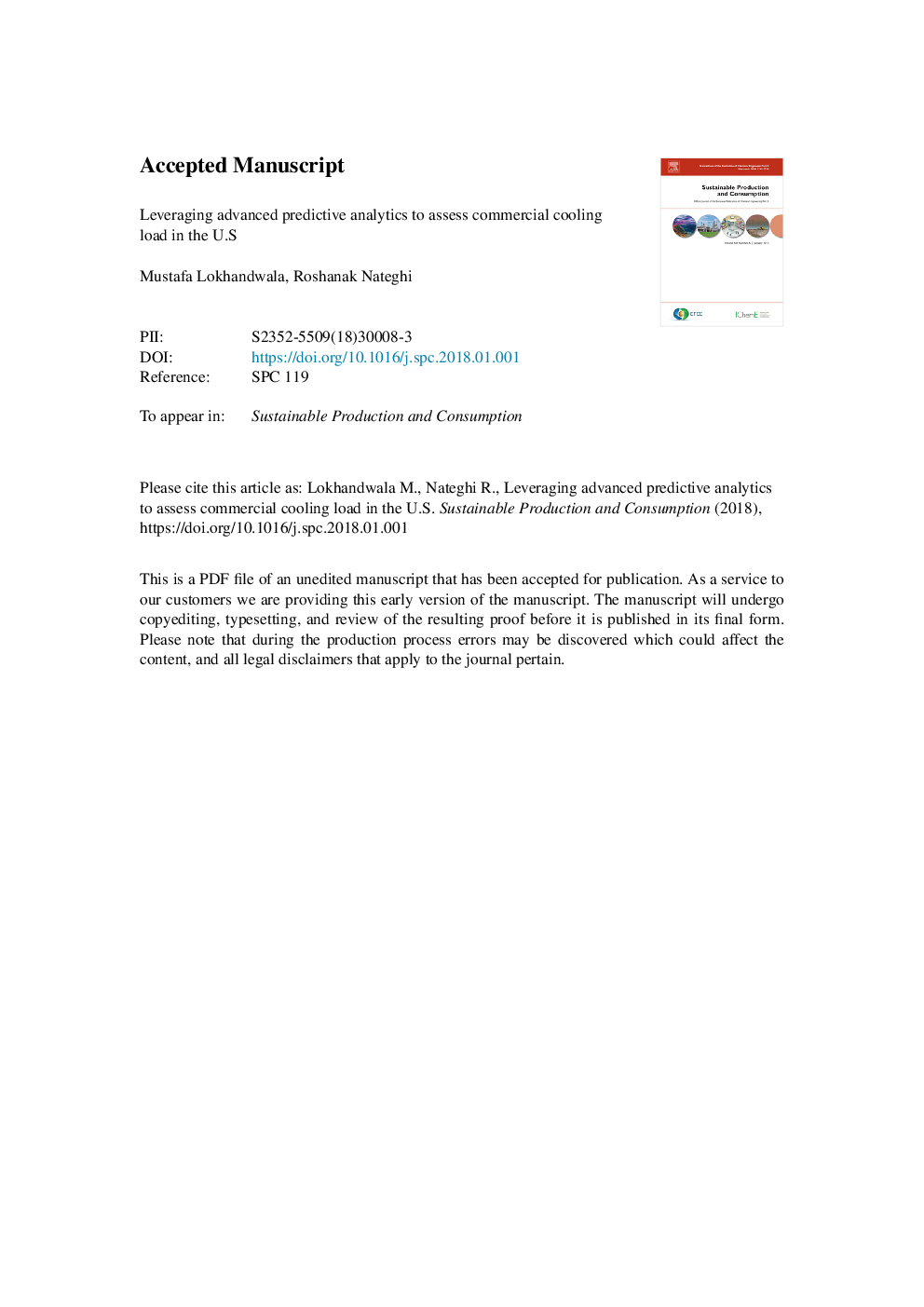| Article ID | Journal | Published Year | Pages | File Type |
|---|---|---|---|---|
| 7107424 | Sustainable Production and Consumption | 2018 | 36 Pages |
Abstract
Commercial buildings account for over one-third of total electricity consumption and a significant fraction of greenhouse gas emissions in the U.S. Commercial cooling load has significantly increased, with all its concomitant adverse environmental consequences. Characterizing the key drivers of cooling demand is critical for devising effectual policies to enhance operational management of commercial buildings. In this paper, we leveraged statistical and machine learning algorithms to identify the key predictors of cooling demand intensity, using the EIA CBECS data (2003, 2012). We compared consumption patterns over the two years to infer how cooling load has evolved. We found that while the mean and median values of demand intensity have increased modestly since the early 2000's; there has been an extremely steep increase in maximum usage-intensity over that period. Moreover, demand intensity has increased more rapidly as a function of non-climatic conditions in 2012 relative to 2003. At a macro-level, our data-driven analysis identified climate and building type as the most important predictors of demand in both years. Food services and in-patient health care units were identified as the most energy intensive building types, with higher intensity in 2012 compared to 2003. Moreover, the South was found to have the highest demand, with higher intensity in 2012 relative to 2003.
Keywords
Related Topics
Physical Sciences and Engineering
Chemical Engineering
Process Chemistry and Technology
Authors
Mustafa Lokhandwala, Roshanak Nateghi,
